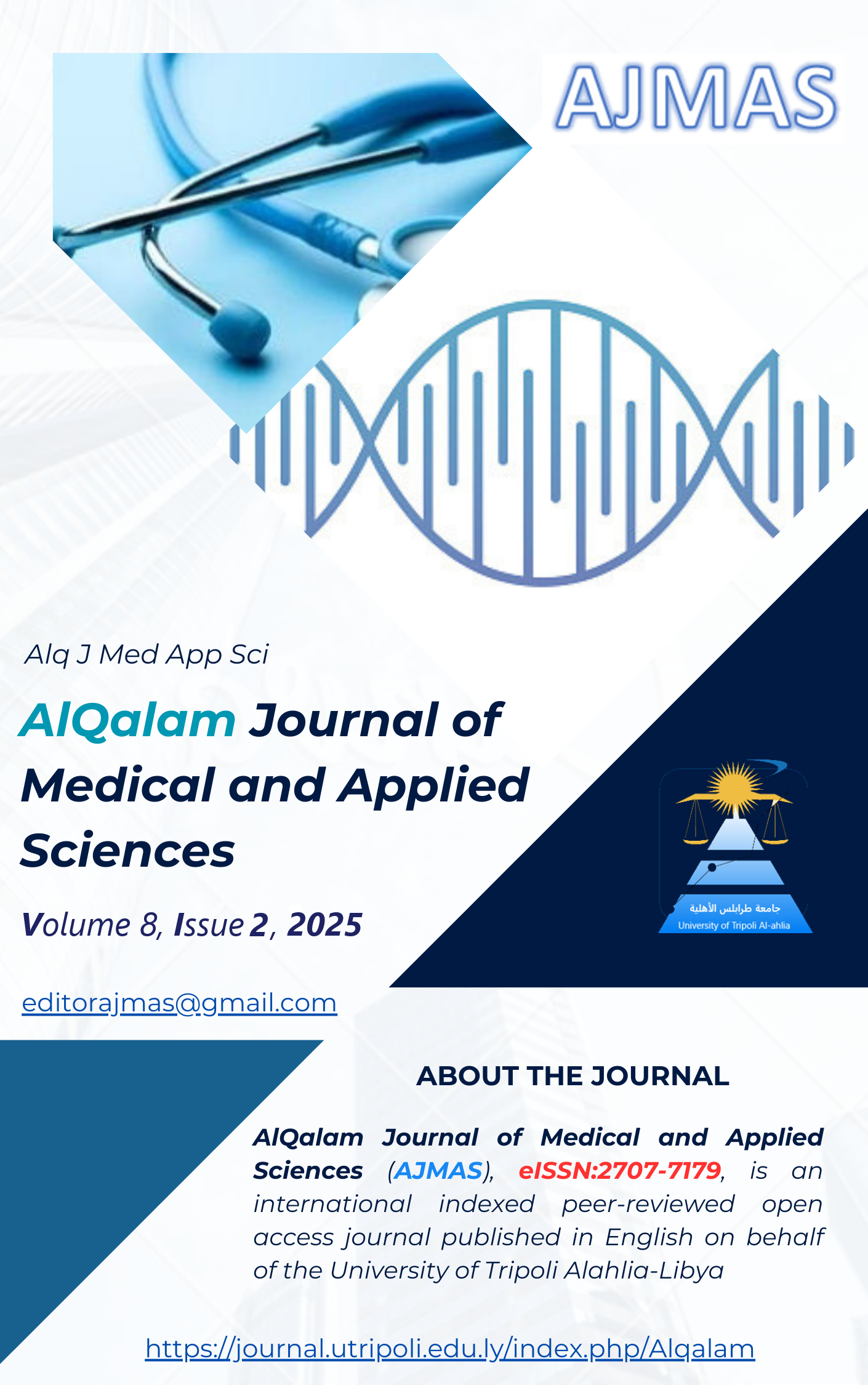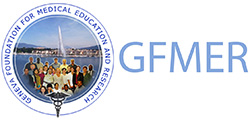Prevalence and Associated Factors of Academic Stress among Medical Students in the University of Tripoli, Libya
DOI:
https://doi.org/10.54361/ajmas.258217Keywords:
Academic Stress, Mental Health, Medical Colleges, Students.Abstract
This study aims to assess the prevalence of academic stress among medical students at the University of Tripoli and explore the associated factors influencing stress levels. The study also examines the impact of gender, academic major, marital status, and academic year on students' stress levels. This cross-sectional descriptive study was conducted on a random sample of 400 students enrolled at the University of Tripoli, Libya, during Fall 2023. Data were collected through an online Google Form survey and analyzed using the Statistical Package for Social Sciences (SPSS) and Q-Square statistical analysis. The findings revealed that stress levels among medical students were extremely high (96%), with moderate stress reported in 75.69% of students and severe stress in 14.66%. Female students were more affected by stress than males (94% vs. 80%). Additionally, third- and fourth-year students experienced the highest stress levels (94.07% and 92.66%, respectively). Among different medical disciplines, pharmacy students exhibited the highest stress levels (97.78%), followed by dentistry students (94.06%). The primary sources of stress were teaching methods (32.25%), lack of time (22.75%), and course difficulty (20%). The study recommends implementing clear curricula, structured educational plans with strict timelines, academic advisors, and student support programs to help students manage academic stress effectively.
تهدف هذه الدراسة إلى تقييم انتشار الضغوط الأكاديمية بين طلاب الطب بجامعة طرابلس واستكشاف العوامل المرتبطة التي تؤثر على مستويات التوتر. كما تدرس الدراسة أيضًا تأثير الجنس والتخصص الأكاديمي والحالة الاجتماعية والسنة الدراسية على مستويات التوتر لدى الطلاب. أجريت هذه الدراسة الوصفية المقطعية على عينة عشوائية من 400 طالب مسجلين في جامعة طرابلس بليبيا خلال خريف 2023. تم جمع البيانات من خلال استبيان عبر الإنترنت من Google Form وتم تحليلها باستخدام الحزمة الإحصائية للعلوم الاجتماعية (SPSS) والتحليل الإحصائي Q-Square. كشفت النتائج أن مستويات التوتر بين طلاب الطب كانت مرتفعة للغاية (96٪)، حيث تم الإبلاغ عن ضغوط متوسطة لدى 75.69٪ من الطلاب وضغوط شديدة لدى 14.66٪. كانت الطالبات أكثر تأثرًا بالتوتر من الذكور (94٪ مقابل 80٪). بالإضافة إلى ذلك، واجه طلاب السنة الثالثة والرابعة أعلى مستويات التوتر (94.07٪ و92.66٪ على التوالي). من بين التخصصات الطبية المختلفة، أظهر طلاب الصيدلة أعلى مستويات التوتر (97.78%)، يليهم طلاب طب الأسنان (94.06%). وكانت المصادر الرئيسية للتوتر هي أساليب التدريس (32.25%)، وضيق الوقت (22.75%)، وصعوبة المقررات الدراسية (20%). وتوصي الدراسة بتطبيق مناهج واضحة، وخطط تعليمية منظمة ذات جداول زمنية محددة، ووجود مرشدين أكاديميين، وبرامج دعم طلابي لمساعدة الطلاب على إدارة ضغوطهم الدراسية بفعالية
Downloads
Published
How to Cite
Issue
Section
License
Copyright (c) 2025 Sarra Abumaeza, Hager Ali, Aisha Alharari

This work is licensed under a Creative Commons Attribution 4.0 International License.














